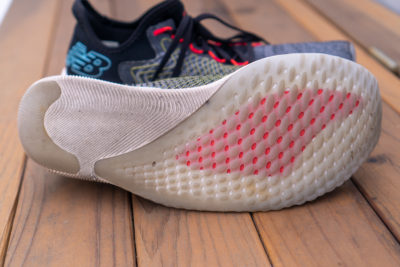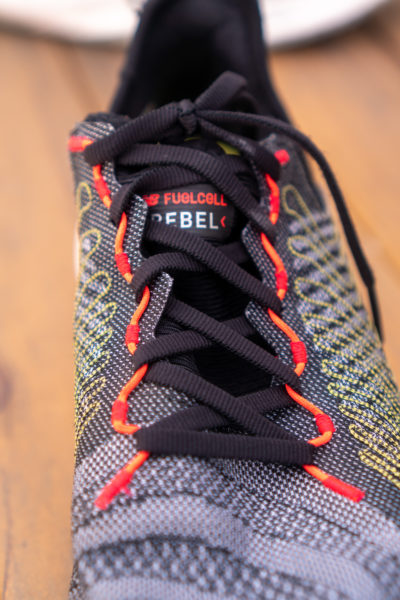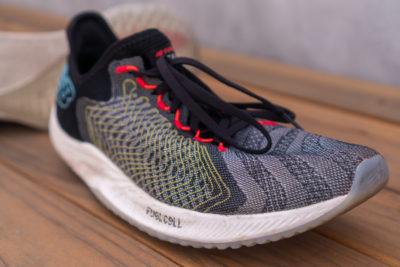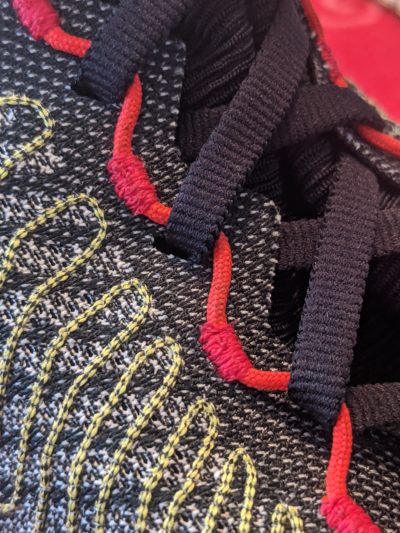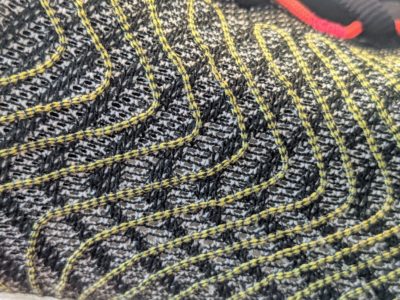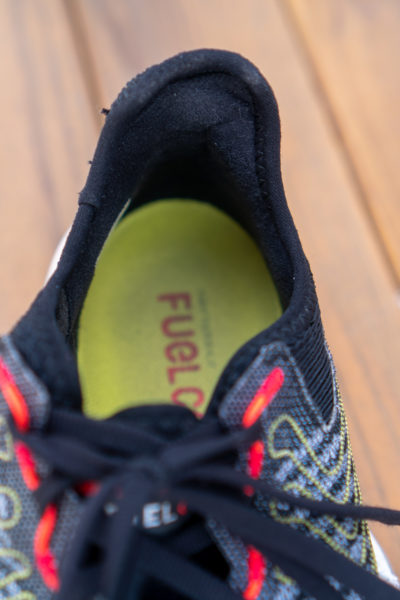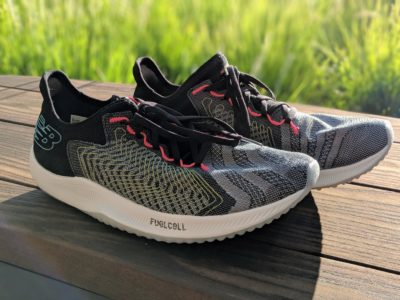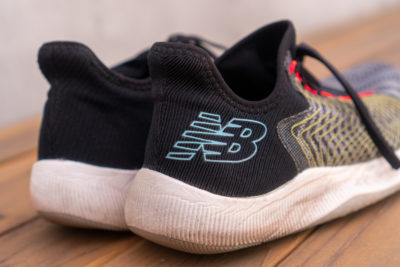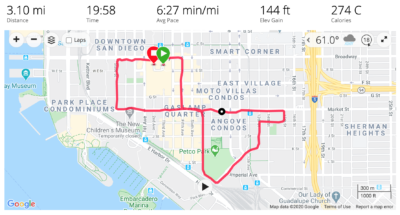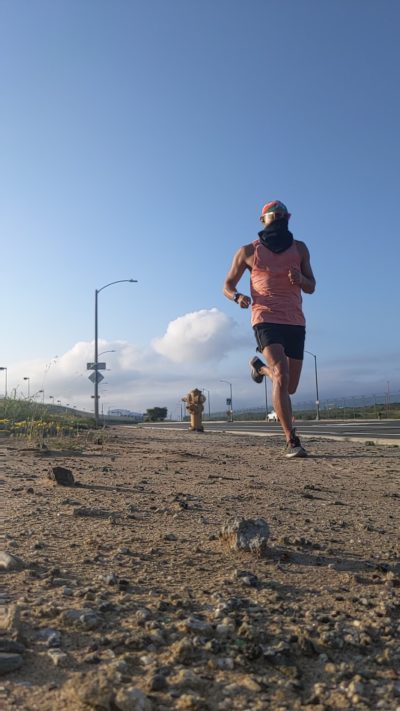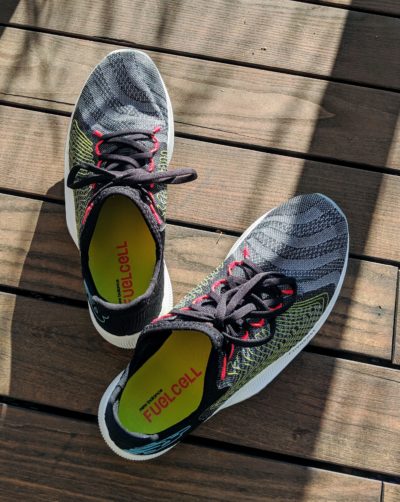
New Balance FuelCell Rebel Review
Inspired by design of the 5280 elite racing flat, this new model from New Balance brings an amazingly responsive shoe that likes to fly. My review after 100 miles.
What Is It?
The FuelCell Rebel is a brand new model from New Balance that's designed for faster training and racing. It's a low profile shoe that's comprised of a snug but accommodating jacquard knit upper, a new dual density high-rebound FuelCell foam, and a very unique outsole design.
The one-piece upper jacquard knit top is a bootie construction that feels like you're slipping on a sock. With this type of design there's no traditional tongue to move around, but it also means for some people, there might be some bunching depending on the volume of their foot. It's snug and stretchy at the same time and it hasn't lost its shape over time. That can be attributed to the "tracer" threads (the yellow threads) that provide lightweight structure to the knit. The inside is very smooth and not likely to cause any abrasions. The clever lacing design utilizes support support loops to gives a good mid-foot lock down without putting a lot of pressure on the top of the foot. Laces are flat and stay tied with a single not. I've never had them come undone.
The collar is really simple in construction. The heel collar moves with the back of your leg without putting pressure on the achilles. The heel counter is small but provides just enough support.
The midsole is made up of a dual density foam with FuelCell technology located in the forefoot for a high rebound and responsive feel. This is visible at the bottom where you can see the firmer but lightweight foam surrounding the FuelCell. This design is catered to faster running and forefoot and midfoot strikers. This version of FuelCell comes with 22mm in the back and 16mm in the front. At 6mm, it still feels relatively flat.
The outsole is unusual with a wing design inspired by data and feedback from 5280 elite racing flat. The flared out part adds additional traction during natural pronation. There is a generous amount of rubber under the forefoot and mid-foot followed by some exposed foam and smaller piece of rubber rounding out the back of the heel.
The FuelCell Rebel has the following specs:
- 6mm offset (16mm front, 22mm back)
- 7.5oz (212.62g) in a US men's size 10
Why Did I Get It?
I was looking for a lower weight shoe for racing shorter distances and to use for track sessions and faster tempo runs. A while back, I had a shoe called the Nike Lunaracer which I used for faster attempts and fast workouts. Unfortunately, it was discontinued and I started using other heavier shoes, less stable shoes.
I also had recently been running in the New Balance Fresh Foam Beacon wanted to try more New Balance shoes so I took the plunge after trying them on at my local New Balance store.
How Have They Worked Out?
First of all, I think the default black colorway of the shoe looks great. It looks like nothing else on the market. It's sleek and low profile. The red and yellow trim are nice highlights that double as actual functional parts of the design.
The immediate step-in was great. If they made gloves for feet then these would be that product. They didn't seem to require any break-in period as they felt great out of the box.
The first run in these shoes was a structured road Fartlek workout comprised of 2min:3min x 2, 3min:2min x 2, 4min:1min x 2 (HARD:JOG). So a progressively hard workout with diminishing rest. During this run I discovered that the faster I ran the better the shoes felt. This has become a theme for all the runs I've done in these shoes.
The longest I've run in the shoes is 9.5 miles which was a very long random Fartlek day. New Balance recommends this for up to half-marathon races which I would agree with.
The foam seems to feel the same regardless of the temperatures so it's easy to get into my workouts and races. Also, even with a little bit of creasing, the foam has worn evenly without drooping (which I notice with softer foams).
The outsole wear of the shoes has been pretty good as well. I tend to wear the lateral side of running shoes faster but the rubber has been durable
Oddly enough, these are one of my favorite shoes in my arsenal but I actually don't wear them that often. I primarily save them for shorter hard days and racing only. Because my training is mostly easy and I don't do a lot shorter racing, these shoes get used the least. Still, I look forward to the days that I get to wear them.
The Good
- It's bouncy without being sloppy
- The faster you run the more fun they feel
- The great fit and grip means you can focus on the running
- The drop isn't very noticeable
The Less Good
- It's not meant to go slow in
- It's not an everyday shoe
- It's not designed for long distance
The Best Run
- The 2019 Run For The Hungry Turkey Trot where I raced the 5K distance. The conditions were wet roads with light rain and swirling winds. The course had a number of 90 degree turns and the shoes had great grip on the wet asphalt. I felt confident to run hard in the shoes and they helped me to a master's 5K PR and allowing me to break the elusive 20 minute barrier.
Is It Worth It?
At $129 USD, I believe these are worth taking a look at if you need a "fast day" shoe that can double up as a racing shoe. It might not be the lightest racing shoe but it makes up for it with surefooted comfort, traction, and spring.
Highly recommended if you like to go fast!
